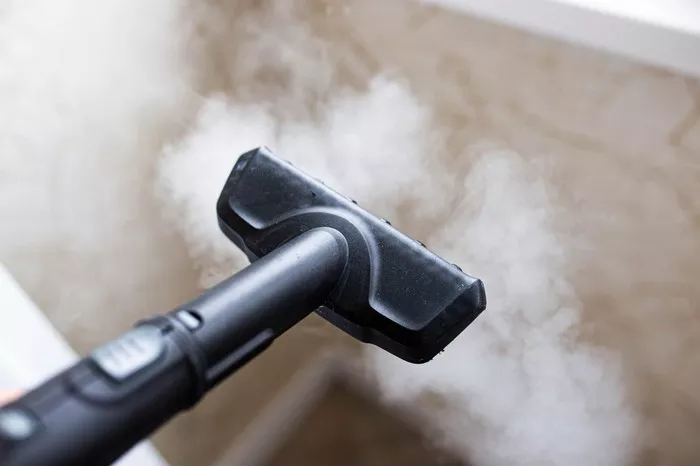Steam cleaning has emerged as a revolutionary method for effectively sanitizing and cleansing various surfaces within the home. Unlike traditional cleaning methods that rely on chemicals, steam cleaning utilizes the power of high-temperature steam to dissolve dirt, grime, and bacteria. This eco-friendly approach not only ensures a hygienic living environment but also eliminates the need for harsh chemicals, making it safe for both your family and the environment.
Potential Risks of Steam Cleaning:
While steam cleaning is generally safe and highly effective for many surfaces, it’s essential to recognize that there are certain areas of the home where steam cleaning may cause damage or pose risks. Understanding these potential risks is crucial to avoid inadvertently damaging your belongings or compromising your safety.
1. Delicate Surfaces:
One of the primary considerations when using a steam cleaner is the type of surface being treated. Delicate surfaces such as hardwood floors, laminate flooring, and certain types of painted surfaces can be susceptible to damage from steam cleaning. The high temperature and moisture generated by steam cleaners can cause warping, swelling, or discoloration, especially on sensitive finishes. It’s important to exercise caution and avoid using steam cleaners on these surfaces to prevent costly damage.
2. Electrical Outlets and Appliances:
Another critical aspect to consider is the proximity of electrical outlets, switches, or electronic appliances to the areas being steam cleaned. Using a steam cleaner near electrical components poses a significant risk of electric shock or damage to sensitive electronic circuits. Always ensure that electrical outlets are covered and electronic devices are unplugged or relocated before using a steam cleaner to prevent accidents and equipment damage.
3. Unsealed or Cracked Surfaces:
Steam cleaning is not suitable for unsealed grout, cracked tiles, or porous surfaces. The high-pressure steam can force moisture into these areas, leading to water damage, mold growth, or even structural issues over time. It’s essential to inspect surfaces for any signs of damage or wear before steam cleaning and address any repairs or sealing as needed to prevent moisture infiltration.
4. Waxed or Unfinished Wood:
Waxed or unfinished wood surfaces should never be subjected to steam cleaning. The moisture from the steam can penetrate the wood, causing swelling, warping, or discoloration. Additionally, steam cleaning can strip away protective wax finishes, leaving the wood vulnerable to damage from moisture and stains. To preserve the integrity of wood surfaces, it’s best to use alternative cleaning methods such as dusting or gentle wiping with a damp cloth.
5. Sensitive Fabrics and Upholstery:
When it comes to cleaning delicate fabrics, silk, velvet, or upholstery with water-sensitive dyes, caution is paramount. Steam cleaners produce heat and moisture, which can cause shrinking, fading, or water spots on sensitive fabrics. Before using a steam cleaner on upholstery or fabric surfaces, always check the manufacturer’s recommendations and perform a spot test in an inconspicuous area to ensure compatibility and avoid damage.
6. Antiques and Heirlooms:
Preserving the integrity of antique furniture, delicate ceramics, or heirloom items requires special care and attention. Steam cleaning these valuable possessions can inadvertently cause irreparable damage, including loosening glued joints, fading delicate finishes, or compromising structural integrity. To safeguard these cherished belongings, it’s advisable to refrain from using steam cleaners and opt for gentle cleaning methods such as dusting or spot cleaning with a mild detergent.
7. Natural Stone Surfaces:
While steam cleaning can be effective for some natural stone surfaces, such as granite or slate, it’s important to exercise caution with more delicate varieties like marble or limestone. The high temperature and pressure of steam can etch or discolor these softer stones, leaving behind irreversible damage. Before steam cleaning natural stone surfaces, always consult with a professional or refer to the manufacturer’s guidelines to determine compatibility and minimize the risk of damage.
Personal Safety Precautions:
Before using a steam cleaner, it’s essential to prioritize personal safety and follow recommended precautions. Always read and familiarize yourself with the manufacturer’s instructions to ensure proper usage and prevent accidents. Additionally, wear appropriate safety gear, including gloves and eye protection, to shield yourself from steam and potential splashes. Finally, test the steam cleaner on a small, inconspicuous area before treating larger surfaces to assess compatibility and avoid unintended damage.
Conclusion:
While steam cleaning offers numerous benefits for maintaining a clean and hygienic home environment, it’s crucial to exercise caution and avoid using steam cleaners on surfaces where they may cause damage or pose risks. By understanding the limitations of steam cleaning and following recommended precautions, you can ensure the longevity and integrity of your belongings while enjoying the convenience and effectiveness of steam cleaning in appropriate areas of your home.

